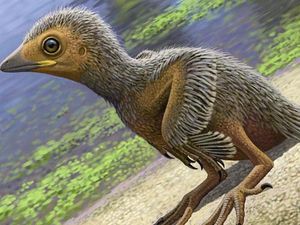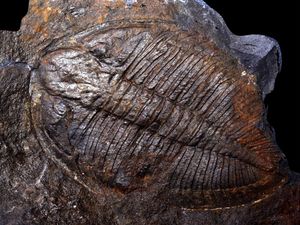A 127 million-year-old fossil could shed light on how ancient birds evolved
The fossil is a chick from a group of prehistoric birds that lived alongside dinosaurs.

A tiny bird fossil, believed to be one of the smallest ever discovered, could give scientists a rare insight into how ancient birds evolved.
Researchers studying the specimen believe the chick may have died shortly after its birth – providing the team an opportunity to understand more about the critical stage of the bird’s development.
The 127 million-year-old fossil was unearthed at the Las Hoyas site in Spain, which is known its exquisitely preserved dinosaurs.
It measures less than five centimetres – smaller than the little finger on a human hand – and would have weighed just 10 grams when it was alive.

According to the team, the discovery offers insight into the lives of extinct birds that lived in the Mesozoic era between 250 and 66 million years ago – when dinosaurs roamed the Earth.
The bird belonged to a group of prehistoric avians called Enantiornithes. These creatures looked much like modern birds, except they had teeth and clawed fingers on each wing.
Luis Chiappe, from the LA Museum of Natural History, said: “This new discovery, together with others from around the world, allows us to peek into the world of ancient birds that lived during the age of dinosaurs.

Lead researcher Fabien Knoll, of the University of Manchester, said an analysis of bone development could be used to study evolutionary characteristics of the ancient birds.
He said: “New technologies are offering palaeontologists unprecedented capacities to investigate provocative fossils.”
The research is published in the journal Nature Communications.





